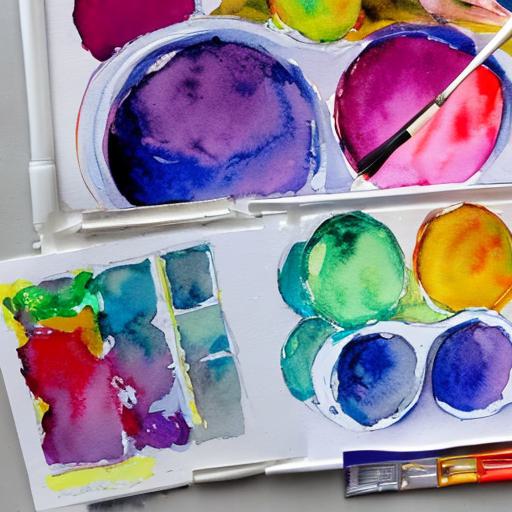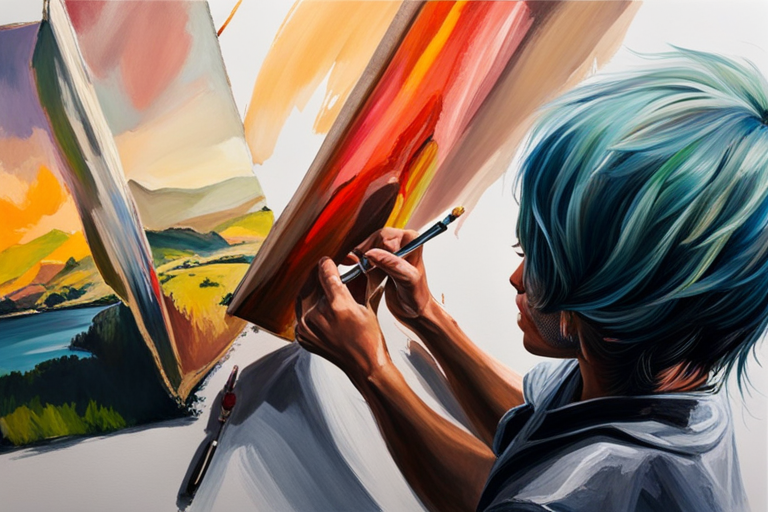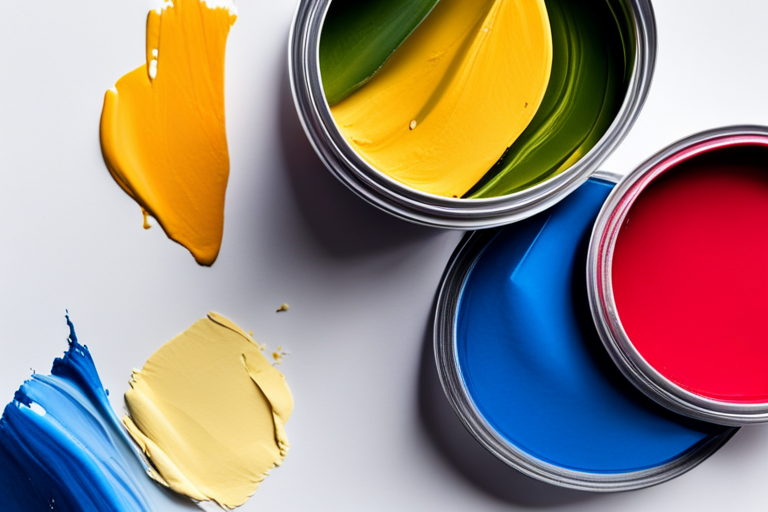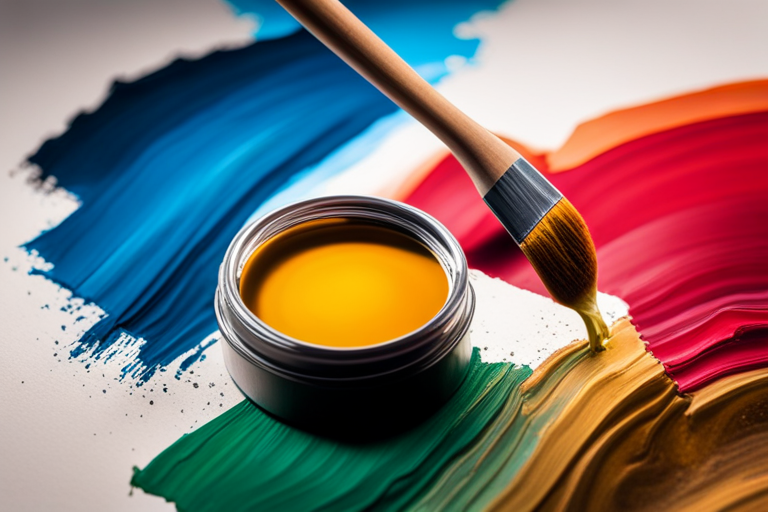Gouache and watercolor paints are two versatile mediums that have been cherished by artists for their unique qualities. Gouache, also known as opaque watercolor, is a type of paint that is composed of pigments, binders, and additives. It is known for its vibrant colors and smooth, velvety finish. Unlike traditional watercolors, gouache provides excellent coverage and opacity, allowing artists to create bold and solid colors.
On the other hand, watercolor paint consists of finely ground pigments suspended in a water-based solution. It is transparent in nature, allowing light to pass through the layers of paint and create subtle washes and delicate effects. Watercolor paintings are often characterized by their luminosity and the way colors blend and interact with the paper.
The purpose of this article is to explore the compatibility of gouache and watercolor paints, specifically in terms of their combination in the artwork. While gouache and watercolor are traditionally considered separate mediums, many artists have experimented with merging the two to achieve unique effects and expand their creative possibilities. By understanding how these mediums interact with each other, artists can unlock new techniques and approaches that can enhance their artwork.
In this article, we will delve into the characteristics of gouache and watercolor paints, highlighting their similarities and differences. We will investigate whether it is possible to combine these mediums effectively and discuss the potential advantages and challenges of working with mixed media. Additionally, we will provide practical tips, techniques, and examples to inspire artists to explore the exciting realm of combining gouache and watercolor paints.
By delving into the compatibility of gouache and watercolor paints, this article aims to encourage artists to push the boundaries of their artistic practice and discover new avenues for creative expression. Whether you are an experienced artist or just starting your artistic journey, this exploration will provide valuable insights into the possibilities that arise when two distinct mediums come together on the canvas.
Understanding Gouache and Watercolor Paints
Gouache Paint: Definition and Characteristics
Gouache paint is an opaque water-based medium widely used in painting and illustration. It consists of pigments mixed with a binding agent, often gum arabic, which provides a smooth and creamy texture. Gouache is known for its vibrant colors and strong opacity, allowing artists to achieve solid, opaque coverage on various surfaces. When dry, gouache paint retains a matte finish, which adds a unique visual appeal to artworks.
Watercolor Paint: Definition and Characteristics
Watercolor paint is a transparent medium that utilizes pigments suspended in a water-soluble binder, typically gum arabic. It is renowned for its fluidity and translucency, creating delicate and ethereal effects. Watercolor paints are known for their vibrant and luminous hues. When applied on absorbent surfaces such as paper, the pigments seamlessly blend with the water, resulting in beautiful gradients and soft edges.
Main Differences between Gouache and Watercolor Paints
Opacity vs. Transparency:
Gouache paint offers excellent coverage and opacity, making it suitable for creating solid, flat areas of color. In contrast, watercolor paint is transparent, allowing the underlying layers or the white of the paper to show through, producing a more luminous and layered effect.
Working Properties:
Gouache has a thicker consistency and can be applied in thick layers, providing a more tactile and textured appearance. Watercolor, on the other hand, has a fluid consistency that lends itself well to delicate washes and glazes, allowing for smooth color transitions.
Layering and Corrections:
Gouache paint allows for easy layering and corrections, as subsequent layers can be applied on top of dried layers without reactivating them. Watercolor, however, requires careful planning and execution due to its transparent nature, as corrections can be challenging once the paint has dried.
Surface Compatibility:
Gouache can be applied to a wide range of surfaces, including paper, illustration board, and even canvas. Watercolor is primarily used on absorbent surfaces like watercolor paper, as it relies on the paper’s ability to hold and distribute the water and pigment effectively.
Understanding these fundamental differences between gouache and watercolor paints is essential when considering their compatibility and exploring the possibilities of combining them in the artwork.
Exploring Compatibility
Mixing gouache with watercolor: Is it possible?
Combining gouache and watercolor paints has been a subject of curiosity among artists. Many wonder whether these two mediums can be mixed effectively to create unique artistic effects.
Assessing the compatibility of gouache and watercolor paints
To determine the compatibility of gouache and watercolor paints, it is essential to consider several factors. These factors include the properties of the paints, such as their composition, opacity, and drying time. Additionally, the absorbency of the painting surface and the desired effect also play a crucial role in assessing compatibility.
Factors to consider when combining gouache and watercolor paints
Opacity and Transparency: Gouache paints are known for their high opacity, while watercolors are valued for their transparency. Artists should consider how the desired level of transparency or opacity may impact the final outcome.
Drying Time: Gouache paints dry to a matte finish relatively quickly, while watercolors dry to a lighter, more transparent appearance. The different drying times of these mediums can affect how they blend and interact when combined.
Painting Surface: The surface used for the artwork can influence how gouache and watercolors behave when combined. Highly absorbent surfaces like watercolor paper may soak up gouache pigments differently, altering the overall result.
Layering and Overworking: Gouache is known for its ability to be layered and reactivated with water even after drying. Watercolor, on the other hand, is more delicate and can be easily disturbed by additional layers. Artists should consider their desired layering techniques and how the two mediums will respond when combined.
Chemical Composition: Gouache and watercolor paints have different chemical compositions, which can affect their compatibility. Some pigments or binders in gouache may react differently when mixed with watercolors, potentially resulting in undesired effects.
By carefully considering these factors, artists can make informed decisions about how to combine gouache and watercolor paints effectively, achieving desired results and exploring the vast possibilities that arise from this creative combination.
Advantages and Challenges
Advantages of combining gouache and watercolor paints
Enhanced versatility:
By combining gouache and watercolor paints, artists can enjoy the best of both worlds. Gouache provides opacity and vibrant colors, while watercolor offers transparency and delicate washes. This combination allows for a wide range of effects and textures in artworks.
Increased control:
Gouache paints offer excellent control and can be used for precise details and highlights. When combined with watercolor, artists can achieve a fine balance between controlled areas and more fluid, spontaneous washes.
Layering and depth:
The layering capabilities of gouache and watercolor paints can be combined to create depth and dimension in artworks. The ability to layer gouache over watercolor or vice versa adds richness and complexity to the final piece.
Potential challenges when working with mixed media
Surface preparation:
Gouache and watercolor have different requirements in terms of surface preparation. Gouache generally works best on thick, smooth surfaces, while watercolor is often used on absorbent papers. Finding a suitable surface that accommodates both mediums can be a challenge.
Mixing consistency:
Gouache and watercolor paints have different consistencies, with gouache being thicker and more opaque. Achieving a consistent and harmonious blend of the two mediums may require some experimentation and practice.
Drying time:
Gouache and watercolor paints have different drying times. Gouache dries quickly, allowing for layering without disturbing the underlying layers, while watercolor dries more slowly and can remain wet for longer. Managing the drying times of both mediums can be a challenge when working on a mixed-media piece.
Tips and techniques to overcome challenges
Surface selection:
Choose a surface that can handle both gouache and watercolor paints, such as heavyweight watercolor paper or mixed media paper. Alternatively, prime the surface with a layer of gesso to create a suitable ground for both mediums.
Experiment with ratios:
Explore different ratios of gouache to watercolor to find the desired consistency and transparency. Gradually adding watercolor to the gouache or vice versa allows for better control over the final result.
Timing and layering:
Pay attention to the drying times of each medium and plan your layering accordingly. Start with watercolor washes as an underpainting and then add gouache for details and highlights once the initial layers are dry.
Practice and experimentation:
Embrace the learning process and be open to experimentation. Each artist may have their own preferred techniques and methods for working with mixed media. Practice different approaches and techniques to find what works best for your artistic style.
Techniques and Applications
Techniques for combining gouache and watercolor paints
Combining gouache and watercolor paints offers artists a unique opportunity to explore a diverse range of techniques. Here are some techniques that can be used to effectively combine these two mediums:

Wet-on-Wet Technique:
Wet your watercolor paper with clean water and apply a watercolor wash. While the wash is still wet, introduce gouache paint by dabbing or brushing it onto the surface. The gouache will blend with the watercolor, creating interesting textures and color variations.
Layering Technique:
Start by applying a base layer of watercolor wash on your paper. Once it is completely dry, use gouache to add opaque layers on top. This technique allows for the creation of rich, vibrant colors and adds depth to your artwork.
Dry Brush Technique:
Load your brush with a small amount of gouache paint and remove excess moisture. Apply the paint onto dry watercolor paper using short, controlled strokes. This technique works best for adding fine details or highlights to your watercolor paintings.
Different effects achieved through mixed media techniques
Combining gouache and watercolor paints opens up a world of possibilities in terms of effects and textures. Here are some effects that can be achieved through mixed media techniques:
Opacity and Vibrancy:
Gouache paint is known for its opaque nature, allowing you to create bold and vibrant colors. By incorporating gouache with watercolor, you can enhance the intensity of certain areas in your artwork while maintaining the transparency of watercolor in other areas.
Texture and Dimension:
Gouache has a thicker consistency compared to watercolor, enabling artists to build up textures and create three-dimensional effects. Mixing gouache with watercolor allows for the creation of interesting textures, such as impasto or dry brush effects.
Layering and Blending:
Watercolor is renowned for its ability to create smooth transitions and delicate washes. By combining gouache and watercolor, you can achieve unique layering and blending effects. The opaque gouache can be layered on top of watercolor washes, creating a sense of depth and dimension.
Applications of combining gouache and watercolor paints in art
The combination of gouache and watercolor paints offers artists a versatile range of applications in their artistic endeavors. Here are some common applications of this mixed-media approach:
Illustration:
Gouache and watercolor can be combined to create stunning illustrations, particularly for book covers, editorial illustrations, and botanical art. The opaque gouache allows for precise detailing, while the transparency of watercolor adds a soft, ethereal quality to the artwork.
Mixed Media Art:
Artists often incorporate different mediums to add variety and visual interest to their artworks. Combining gouache and watercolor paints allows for the integration of different textures, colors, and effects, resulting in captivating mixed media pieces.
Art Journaling:
Gouache and watercolor can be combined in art journals to document personal experiences, travel memories, or creative experiments. The versatility of these mediums enables artists to experiment with different techniques and express their ideas in a unique and personal way.
Remember, exploring the techniques and applications of combining gouache and watercolor paints is an opportunity to unleash your creativity and discover your own distinctive style. Embrace experimentation and enjoy the process of merging these two mediums to create captivating artworks.
Wrapping Up
Combining gouache and watercolor paints opens up a world of artistic possibilities. Throughout this article, we have explored the compatibility of these two mediums and discovered the creative potential they hold when used together.
Recapping the compatibility, we have learned that gouache and watercolor paints can indeed be combined, allowing artists to harness the unique qualities of each medium. While gouache offers opacity and vibrancy, watercolor provides transparency and delicacy. By merging these attributes, artists can achieve captivating effects, textures, and colors in their artworks.
Emphasizing the creative potential and versatility of this combination, we have witnessed how the integration of gouache and watercolor can enhance the visual impact of illustrations, mixed media art, and art journaling. From precise detailing to smooth transitions, the possibilities are endless, enabling artists to express their ideas and emotions in unique and captivating ways.
Above all, this article encourages artists to embark on their own journey of experimentation and discovery. By exploring various techniques, such as wet-on-wet, layering, and dry brush, artists can unlock their creativity and develop their own distinctive style. Embrace the process, take risks, and let your imagination guide you as you merge gouache and watercolor paints in innovative ways.
In the realm of art, the blending of mediums is a continuous adventure, and the combination of gouache and watercolor paints offers an exciting path to explore. So, grab your brushes, embrace the harmony of opacity and transparency, and let your artistic vision come to life through the fusion of these two beautiful mediums.




Leave a Reply